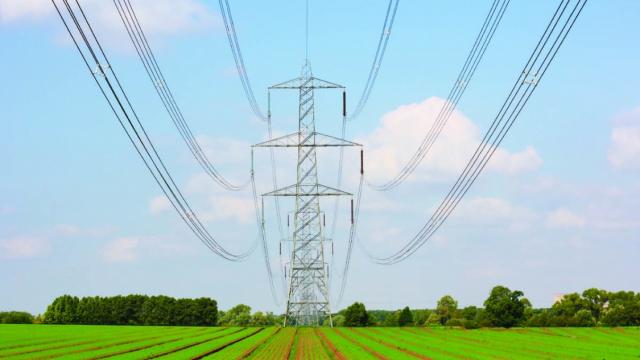
As technologies mature, prices drop. And we’ve been hearing a lot about the drop in the price of generating and transmitting renewable energy as those technologies have grown from pie-in-the-sky dreams to everyday realities. Yet many people still think of rooftop solar photovoltaic (PV) systems as unaffordable luxuries.
Now a new report called Going Solar in America, prepared by the North Carolina Clean Energy Technology Center with the support of the U.S. Department of Energy’s SunShot Initiative, shows how the plummeting costs of going solar could already make it the more economical choice for energy consumers in 42 of the U.S.’s 50 largest cities. It found that in those cities, a fully financed solar system would cost average residential consumers less than they would pay for electricity from their current local utility.
New York and Boston topped the list, in large part because the cost of electricity from the grid is very expensive there. The top ten is rounded out by Albuquerque, San Jose, Las Vegas, Washington D.C., Los Angeles, San Diego, Oakland and San Francisco. High local energy costs also account for California cities filling half the top ten slots.
“Most Americans are unaware of the true financial value of solar today,” said study authors Jim Kennerly and Autumn Proudlove. “Seen by many as a technological luxury, solar energy is not seriously considered as an option by most homeowners in the U.S. However, our analysis shows that, in 46 of America’s 50 largest cities, a fully-financed, typically-sized solar PV system is a better investment than the stock market, and in 42 of these cities, the same system already costs less than energy from a residential customer’s local utility.”
Additionally, the study found that 9.1 million single-family homeowners in the 50 cities live in a place where buying a solar system outright would cost less than their current utility bill over the life of the system, and 21 million would pay less if low-cost financing were available. That’s based on the assumption of a 100 percent financed purchase at 5 percent interest over 25 years, the average life of a solar PV system.
Factors that play into the increasing affordability of going solar include a steep drop in the price of hardware and electricity costs that are likely to climb by as much as 83 percent over the next 25 years. The study suggested that in order to compete for market share, non-hardware costs such as installation labor, financing, customer acquisition, permitting and inspection, which can add up to 64 percent of the total cost of a system, need to come down.
“It is not hyperbolic to say that the soft-cost reduction challenge is at the heart of getting rooftop solar PV to a level of broad-based cost-effectiveness (and true nationwide consumer acceptance),” the report says.
The cost of generating home electricity through a solar system is also impacted by government policies such as renewable energy standards, net metering and the federal Investment Tax Credit, which are harder to predict. And some of those policies are under heavy attack, as shown by the recent freeze in Ohio’s renewable energy standards and a proposal there to eliminate them entirely, and Arizona’s proposal to tax solar PV systems. The federal Investment Tax Credit is set to expire at the end of 2016 so its future is unclear.
“A major reason why these dramatic cost declines have resulted in more people investing in solar is the existence of supportive federal, state and local incentives and public policies,” the study says. “While some incentives are intended to ‘sweeten the deal’ and jumpstart the local solar market, others are more basic policies that allow customer-generators to enter the market and receive a payment for the power they supply to the grid.”
The authors said that their study was intended to help dispel the idea that solar energy was out of reach for the average energy consumer.
“It is our hope that people will come away realizing that solar is now not just an option for the rich, but a real opportunity for anyone looking to take greater control over their monthly utility bills and make a long-term, relatively low-risk investment,” they said.
*
MEANWHILE, Kirsten Korosec reports for Fortune that there are now twice as many U.S. solar workers as coal miners:
SolarCity, the largest installer of residential solar systems in the U.S., nearly doubled its workforce last year, hiring 4,000 people to do everything from system design and site surveys to installation and engineering.
The hiring spree at SolarCity isn’t slowing; it’s picking up speed as the company attempts to install twice as many rooftop solar systems than last year and readies its 1.2 million-square foot factory in New York, which is scheduled to reach full production in 2017.
SolarCity SCTY -2.21% plans to eclipse 2014’s hiring numbers, CEO Lyndon Rive tells Fortune. In 2016, SolarCity will hire “quite a bit more” than it will in 2015, Rive says, though he didn’t provide specific numbers.
The company’s expansion is indicative of what’s happening within the broader solar industry. More than 31,000 new solar jobs were created in the U.S. in 2014 bringing the total to 173,807—a 21.8 percent increase in employment since November 2013, according to a report released Thursday by The Solar Foundation. This is the second consecutive year that solar jobs have increased by at least 20 percent.
The solar industry is still dwarfed by the 9.8 million workers that the American Petroleum Industry says are employed the oil and gas industry. However, the Solar Foundation is quick to point out the industry is starting to surpass some fossil fuel-related job categories.
Solar already employs more people than coal mining, which has 93,185 workers, and has added 50 percent more jobs in 2014 than the oil and gas pipeline construction industry (10,529) and the crude petroleum and natural gas extraction industry (8,688) did combined, according to the Solar Foundation.
One out of every 78 new jobs created in the U.S. over the past 12 months were created by the solar industry, representing nearly 1.3 percent of all jobs created in the country. Solar companies surveyed for the fifth annual census plan to add another 36,000 employees this year.
“That’s just insane,” Rive says. “The solar industry is literally contributing to the job growth of the U.S. economy—and it’s just so understated.”
Third-party financing that allows homeowners to lease solar systems, a stabilizing manufacturing sector and utility-scale solar developers scrambling to finish projects before the federal investment tax credit drops from 30 percent to 10 percent on Jan. 1, 2017 has helped drive growth, says Andrea Luecke, president and executive director of The Solar Foundation.
The solar job-growth trend has spilled beyond the confines of companies solely dedicated to the renewable energy source.
NRG Energy, one of the largest U.S. independent power producers and owner of 88 fossil fuel and nuclear plants, is expanding its solar business rapidly. NRG’s Home Solar group, the residential solar division of NRG Home, hired 500 people in the past 12 months and now has 1,200 workers.
“We’re growing explosively in several markets,” NRG Home Solar president Kelcy Pegler Jr. said in an interview with Fortune on Thursday following the company’s investor day presentation.
As a result, Pegler’s residential home solar group plans to add “hundreds of jobs” this quarter and will double its current headcount in the next two years.
NRG Energy, which employs 10,000 people, reorganized last year into three business lines: NRG Business, NRG Home and NRG Renew. The company NRG -1.02% has a number of other solar-related jobs within NRG Renew and NRG Home, including its power on the go division which was expanded after the 2014 acquisition of portable solar power company Goal Zero.
Overall, solar is one of the fastest growing segments within NRG Energy and the NRG Home group, a business unit that also includes the company’s electricity providers, home services, power on the go products and electric vehicle charging, Pegler says.
Residential solar’s role in creating jobs is largely under appreciated by the public, he says: “These aren’t just part-time jobs either, these are careers.”
3 WAYS TO SHOW YOUR SUPPORT
- Log in to post comments

















